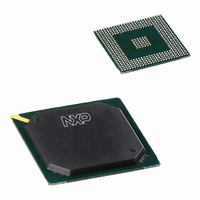PNX1502E,557 NXP Semiconductors, PNX1502E,557 Datasheet - Page 281

PNX1502E,557
Manufacturer Part Number
PNX1502E,557
Description
IC MEDIA PROC 300MHZ 456-BGA
Manufacturer
NXP Semiconductors
Specifications of PNX1502E,557
Applications
Multimedia
Core Processor
TriMedia
Controller Series
Nexperia
Interface
I²C, 2-Wire Serial
Number Of I /o
61
Voltage - Supply
1.23 V ~ 1.37 V
Operating Temperature
0°C ~ 85°C
Mounting Type
Surface Mount
Package / Case
456-BGA
Lead Free Status / RoHS Status
Lead free / RoHS Compliant
Program Memory Type
-
Ram Size
-
Lead Free Status / Rohs Status
Not Compliant
Other names
935274744557
PNX1502E
PNX1502E
PNX1502E
PNX1502E
Available stocks
Company
Part Number
Manufacturer
Quantity
Price
Company:
Part Number:
PNX1502E,557
Manufacturer:
NXP Semiconductors
Quantity:
10 000
- Current page: 281 of 828
- Download datasheet (8Mb)
Philips Semiconductors
Volume 1 of 1
PNX15XX_SER_3
Product data sheet
Figure 7:
1-bit shifted out
=> 32 samples
2-bit shifted out
=> 16 samples
4-bits shifted out
=> 8 samples
Up to 4-bit Samples per FIFO in Pattern Generation Mode
2.4 GPIO Error Behaviour
queue, 16 2-bit samples if 2 outputs are being driven by the FIFO queue or 8 4-bit
samples if 4 outputs are being driven by the FIFO queue. This is illustrated in
Figure
Remark: The number of samples to be generated is specified in a multiple of 32-bit
word being sent by the GPIO module. Therefore, there is no fine-grain way to specify
the exact amount of samples to be sent.
Additional GPIO Pattern Generation Feature: Timestamp Signal Generation
In pattern generation modes the GPIO can be programmed to generate events which
signal that the last 32-bit word read from a DMA buffer has arrived at a GPIO output
pin.
The event will be a positive edge pulse with the duration of the event to be greater
than or equal to 148 ns (2 x [1/13.5 MHz]). The specific event generated for each
FIFO queue is LAST_WORD.
LAST_WORD[3:0] have the same properties as the other internal signals as
described in
The generation of the LAST_WORD[3:0] internal signals is enabled by setting the
EN_EV_TSTAMP field of the relevant GPIO_EV[3:0] register.
A DMA buffer overrun, FIFO_OE, occurs if a new DMA buffer is not supplied by
software in time, i.e if BUF1_RDY and BUF2_RDY are both active.
Similarly to the software double DMA buffering scheme, the GPIO module also
implements a double internal buffering scheme per FIFO. This double buffering
scheme allows to hide the latency of the accesses to the system memory. Each
internal buffer is composed of an internal 64-byte memory. In sampling mode, the
GPIO uses one of the internal 64-byte memories to store the being sampled data
while the second 64-byte memory is being stored into memory. In pattern generation
mode, the 64-byte memories are used in the opposite direction. In both cases the
31302928272625242322212019181716151413121110 9 8 7 6 5 4 3 2 1 0
31
31
31
IO_SEL_3 sample IO_SEL_2 sample IO_SEL_1 sample IO_SEL_0 sample
15
7.
7
14
31
13
Section 2.2
6
12
Rev. 3 — 17 March 2006
11
5
and listed in
10
30
9
4
8
Chapter 8: General Purpose Input Output Pins
IO_SEL_1 sample IO_SEL_0 sample
7
Section
3
6
29
31
5
4.15.
2
4
IO_SEL_0 sample
3
© Koninklijke Philips Electronics N.V. 2006. All rights reserved.
1
PNX15xx Series
2
31
30
28
1
0
0
0
0
0
8-14
Related parts for PNX1502E,557
Image
Part Number
Description
Manufacturer
Datasheet
Request
R
Part Number:
Description:
Digital Signal Processors & Controllers (DSP, DSC) MEDIA PROCESSOR PNX15XX/300MHZ
Manufacturer:
NXP Semiconductors

Part Number:
Description:
IC MEDIA PROC 300MHZ 456-BGA
Manufacturer:
NXP Semiconductors
Datasheet:
Part Number:
Description:
NXP Semiconductors designed the LPC2420/2460 microcontroller around a 16-bit/32-bitARM7TDMI-S CPU core with real-time debug interfaces that include both JTAG andembedded trace
Manufacturer:
NXP Semiconductors
Datasheet:

Part Number:
Description:
NXP Semiconductors designed the LPC2458 microcontroller around a 16-bit/32-bitARM7TDMI-S CPU core with real-time debug interfaces that include both JTAG andembedded trace
Manufacturer:
NXP Semiconductors
Datasheet:
Part Number:
Description:
NXP Semiconductors designed the LPC2468 microcontroller around a 16-bit/32-bitARM7TDMI-S CPU core with real-time debug interfaces that include both JTAG andembedded trace
Manufacturer:
NXP Semiconductors
Datasheet:
Part Number:
Description:
NXP Semiconductors designed the LPC2470 microcontroller, powered by theARM7TDMI-S core, to be a highly integrated microcontroller for a wide range ofapplications that require advanced communications and high quality graphic displays
Manufacturer:
NXP Semiconductors
Datasheet:
Part Number:
Description:
NXP Semiconductors designed the LPC2478 microcontroller, powered by theARM7TDMI-S core, to be a highly integrated microcontroller for a wide range ofapplications that require advanced communications and high quality graphic displays
Manufacturer:
NXP Semiconductors
Datasheet:
Part Number:
Description:
The Philips Semiconductors XA (eXtended Architecture) family of 16-bit single-chip microcontrollers is powerful enough to easily handle the requirements of high performance embedded applications, yet inexpensive enough to compete in the market for hi
Manufacturer:
NXP Semiconductors
Datasheet:

Part Number:
Description:
The Philips Semiconductors XA (eXtended Architecture) family of 16-bit single-chip microcontrollers is powerful enough to easily handle the requirements of high performance embedded applications, yet inexpensive enough to compete in the market for hi
Manufacturer:
NXP Semiconductors
Datasheet:
Part Number:
Description:
The XA-S3 device is a member of Philips Semiconductors? XA(eXtended Architecture) family of high performance 16-bitsingle-chip microcontrollers
Manufacturer:
NXP Semiconductors
Datasheet:

Part Number:
Description:
The NXP BlueStreak LH75401/LH75411 family consists of two low-cost 16/32-bit System-on-Chip (SoC) devices
Manufacturer:
NXP Semiconductors
Datasheet:

Part Number:
Description:
The NXP LPC3130/3131 combine an 180 MHz ARM926EJ-S CPU core, high-speed USB2
Manufacturer:
NXP Semiconductors
Datasheet:

Part Number:
Description:
The NXP LPC3141 combine a 270 MHz ARM926EJ-S CPU core, High-speed USB 2
Manufacturer:
NXP Semiconductors

Part Number:
Description:
The NXP LPC3143 combine a 270 MHz ARM926EJ-S CPU core, High-speed USB 2
Manufacturer:
NXP Semiconductors

Part Number:
Description:
The NXP LPC3152 combines an 180 MHz ARM926EJ-S CPU core, High-speed USB 2
Manufacturer:
NXP Semiconductors











